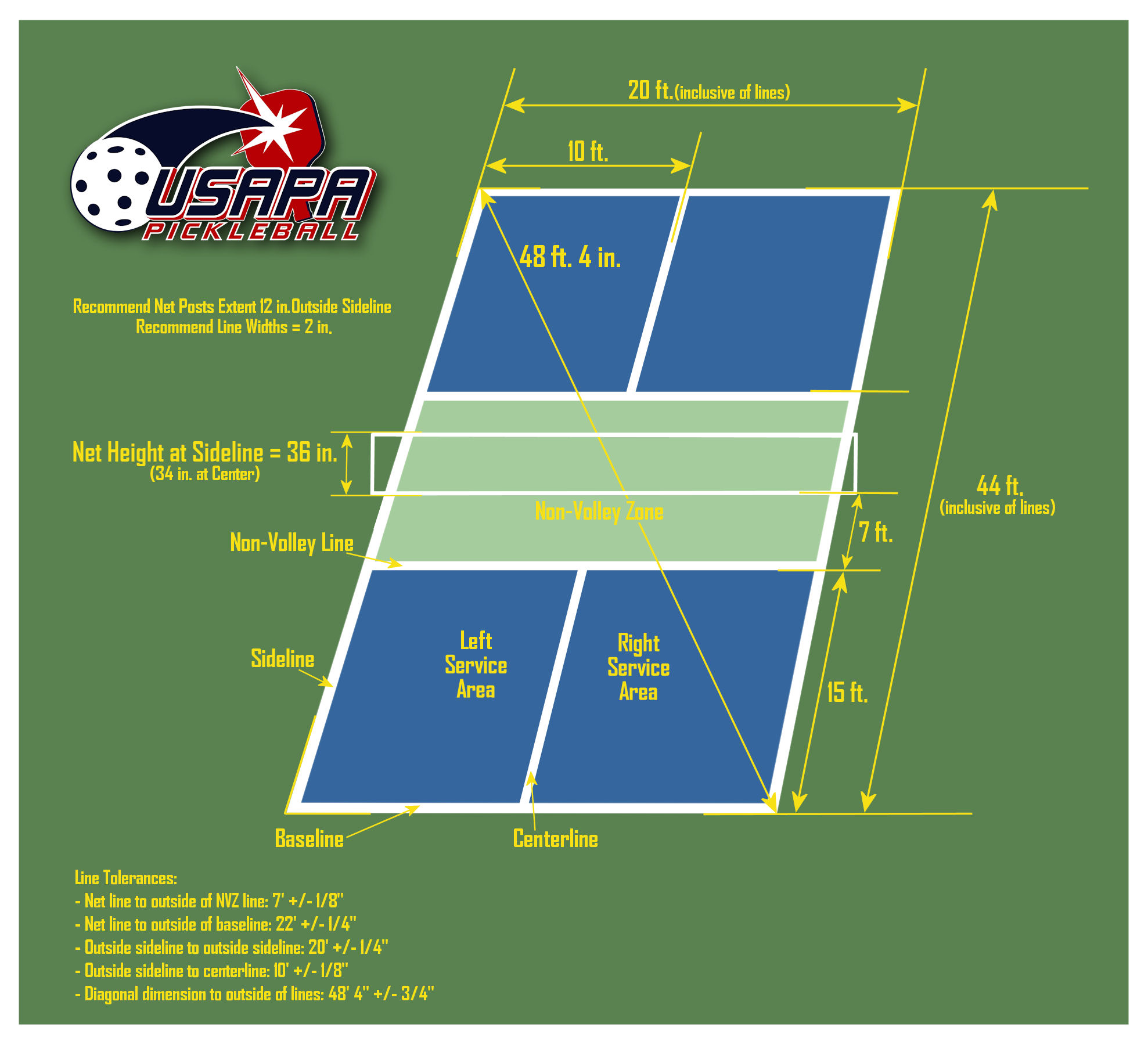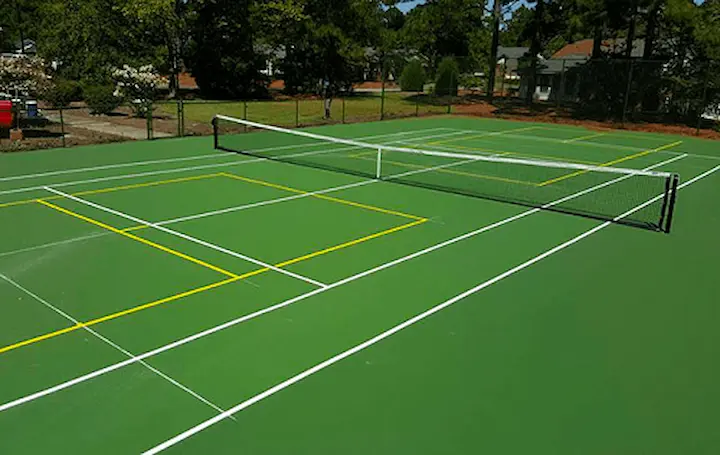Comprehensive Overview to Pickleball Courts Layout & Building in Illinois and Midwest
Comprehensive Overview to Pickleball Courts Layout & Building in Illinois and Midwest
Blog Article
Trick Consider the Building of Pickleball Courts: From Site Option to Final Finishes
The building and construction of pickleball courts includes a variety of vital elements, beginning with the option of an appropriate site that balances accessibility with ecological factors to consider. Essential aspects such as court dimensions, surface area materials, and drain systems considerably affect not just the quality of play yet also the durability of the center.
Website Option Standards
When starting the building of pickleball courts, it is vital to pin down the website option standards that will certainly make certain optimum playability and access. The place needs to be conveniently obtainable for gamers, preferably located near suburbs or neighborhood centers, to encourage involvement.
Moreover, the surface ought to be level and secure, as uneven ground can bring about security dangers and impact gameplay. Sufficient water drainage is additionally vital; picking a site with excellent water runoff will certainly assist keep court problems throughout unfavorable climate.
One more crucial factor to consider is the accessibility of utilities. Accessibility to electricity and water is required for lights and maintenance functions. Furthermore, closeness to auto parking facilities is crucial, facilitating very easy gain access to for gamers and viewers alike.
Environmental aspects can not be forgotten; all-natural shade from trees can enhance player convenience, while direct exposure to prevailing winds might disrupt play. Zoning regulations and neighborhood assistance must be thought about to make sure that the project straightens with neighborhood guidelines and obtains the support it needs for effective execution. By thoroughly assessing these criteria, stakeholders can produce an inviting and practical atmosphere for pickleball fanatics.
Court Capacities and Design
To make certain ideal gameplay and adherence to regulations, the dimensions and design of pickleball courts have to be very carefully defined. A conventional pickleball court determines 20 feet in width and 44 feet in size for both songs and doubles play. The suggested layout includes a non-volley zone, frequently described as the "kitchen area," expanding 7 feet from the net on either side. This location is important, as it affects gamer positioning and shot option - Illinois and midwest.
The internet elevation is established at 36 inches at the sidelines and 34 inches at the facility, producing a mild dip that affects round trajectory. Court markings are just as essential; lines ought to be 2 inches large and unique in shade to ensure exposure.
In addition, a barrier zone bordering the court is a good idea, generally prolonging 5 to 10 feet past the sidelines and standards to suit players' activities and boost safety. Appropriate layout and measurements not only ensure compliance with official laws yet likewise improve the overall playing experience, suiting both leisure and competitive play. Cautious planning in these areas is critical to the effective building of pickleball courts.
Surface Area Material Options
Choosing the ideal surface product for pickleball courts is crucial for guaranteeing optimum player performance and safety and security. The choice of surface area can significantly impact gameplay, consisting of ball bounce, traction, and gamer convenience.
There are a number of alternatives offered, each with its distinct attributes. Asphalt is a prominent choice because of its longevity and low maintenance requirements. It gives a solid playing surface area that can endure numerous climate condition but might need regular resurfacing.
Concrete is another widely used material, using superb longevity and a smooth surface. It permits for constant round bounce yet can be difficult on go to my blog players' joints, making it much less desirable for long-lasting play without correct padding.
For those seeking boosted convenience and shock absorption, supported acrylic surfaces offer a viable alternative. These surface areas combine a base layer with an acrylic overcoat, giving improved traction and a softer feeling, which is advantageous for reducing the threat of injuries.
Lastly, artificial grass is acquiring traction, particularly for multi-purpose facilities. Its versatility and lower upkeep needs make it an eye-catching choice, though it may not offer the very same round response as conventional difficult courts. Careful factor to consider of these alternatives will ensure an ideal having fun environment.
Drain and Lights Factors To Consider
Proper drain and efficient lights are necessary parts in the building and construction of pickleball courts, significantly affecting both playability and safety and security. Appropriate water drainage systems protect against water build-up, which can cause slippery surfaces and damage to the court framework. A properly designed water drainage strategy integrates sloped surfaces and appropriate materials to promote water flow away from the playing location you could check here - Illinois and midwest. This not only maintains the integrity of the court yet likewise minimizes downtime due to poor weather.
Lighting is just as crucial, specifically for courts meant for evening use. Proper lighting improves visibility, making sure that players can see the round plainly and decreasing the risk of accidents. The positioning of lighting components ought to be tactically planned to get rid of darkness and offer even distribution of light across the court. LED lights are recommended for their power efficiency and durability, providing intense lighting while minimizing functional costs.

Final Surfaces and Upkeep
After addressing water drainage and lights factors to consider, attention transforms to the last surfaces and recurring maintenance of pickleball courts. Illinois and midwest. The choice of surface area material is vital, as it influences both playability and toughness. Usual choices include acrylic coatings and specialized sporting activities surface areas that offer optimum grip and padding. These surfaces must be used in several layers to make sure strength against weather elements and use.

Seasonal maintenance may consist of resurfacing every few years, depending upon use and environmental aspects. Correctly keeping webs, court lines, and bordering locations is just as vital to give a risk-free and satisfying having fun experience. By purchasing top quality finishes and sticking to an organized upkeep schedule, center proprietors can ensure their pickleball courts remain in outstanding condition for many years ahead.
Conclusion
Finally, the successful construction of pickleball courts hinges on careful focus to numerous essential aspects. Site selection must prioritize access and surface stability, while court measurements and layout have to comply with optimum criteria for gameplay. The option of surface area material dramatically affects player safety and performance. Efficient drain and ample lighting add to court durability and exposure. Lastly, top quality surfaces and a durable upkeep schedule are necessary for preserving the court's condition, boosting the general experience for players and viewers alike.
Report this page